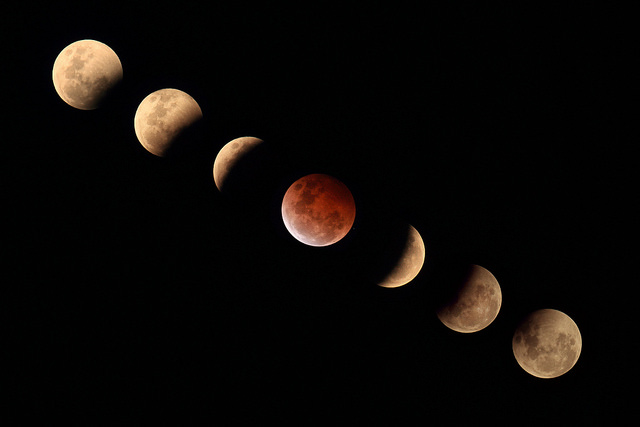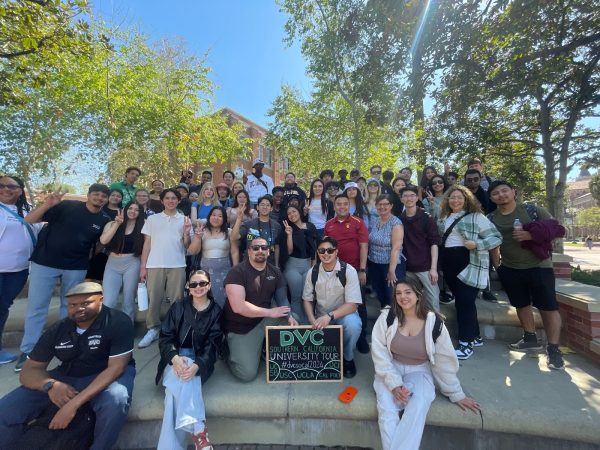Yay science! Check out the Bloodmoon this weekend
Phases of the blood moon. Images courtesy of Flickr user krheesy under a Creative Commons Attribution 2.0 Generic license
September 25, 2015
Let’s hope for clear skies this Sunday night, because early in the evening on Sept. 27 there will be a total lunar eclipse.
Why is this one particularly exciting? Due to the effects of the Earth’s atmosphere, much like the sunset, the refraction of light will cause the moon to turn bright red for a few minutes. This phenomenon is commonly referred to as a “blood moon.”
The eclipse will be visible to the entire Western Hemisphere, meaning nearly 3 billion people will share the same experience of seeing an abstract, but incredible sight.
This will also be referred to as a “supermoon eclipse” due to the fact that the moon will appear about 12 to 14% larger to us, seemingly the biggest full moon of 2015. The last time an eclipse this size happened was in 1982, and it will not happen again until 2033.
Paul Sasse, a DVC astronomy professor, recommends watching from a place of high altitude, to enhance your amount of viewing time. Dinosaur Hill park on Taylor Boulevard, Mount Diablo, Grizzly Peak or Briones park would be ideal. Just be sure to face east, where the moon will be rising from. Sasse says, “Viewing lunar eclipses is completely safe and no special eyewear is needed.”
Since this is the Bay Area, on the off chance that it’s foggy where you are, NASA’s Marshal Space Flight Center will be providing a live stream of the event with commentary beginning at 5 p.m.
The eclipse will be visible starting at twilight and will take about 72 minutes to complete its cycle.
















































































